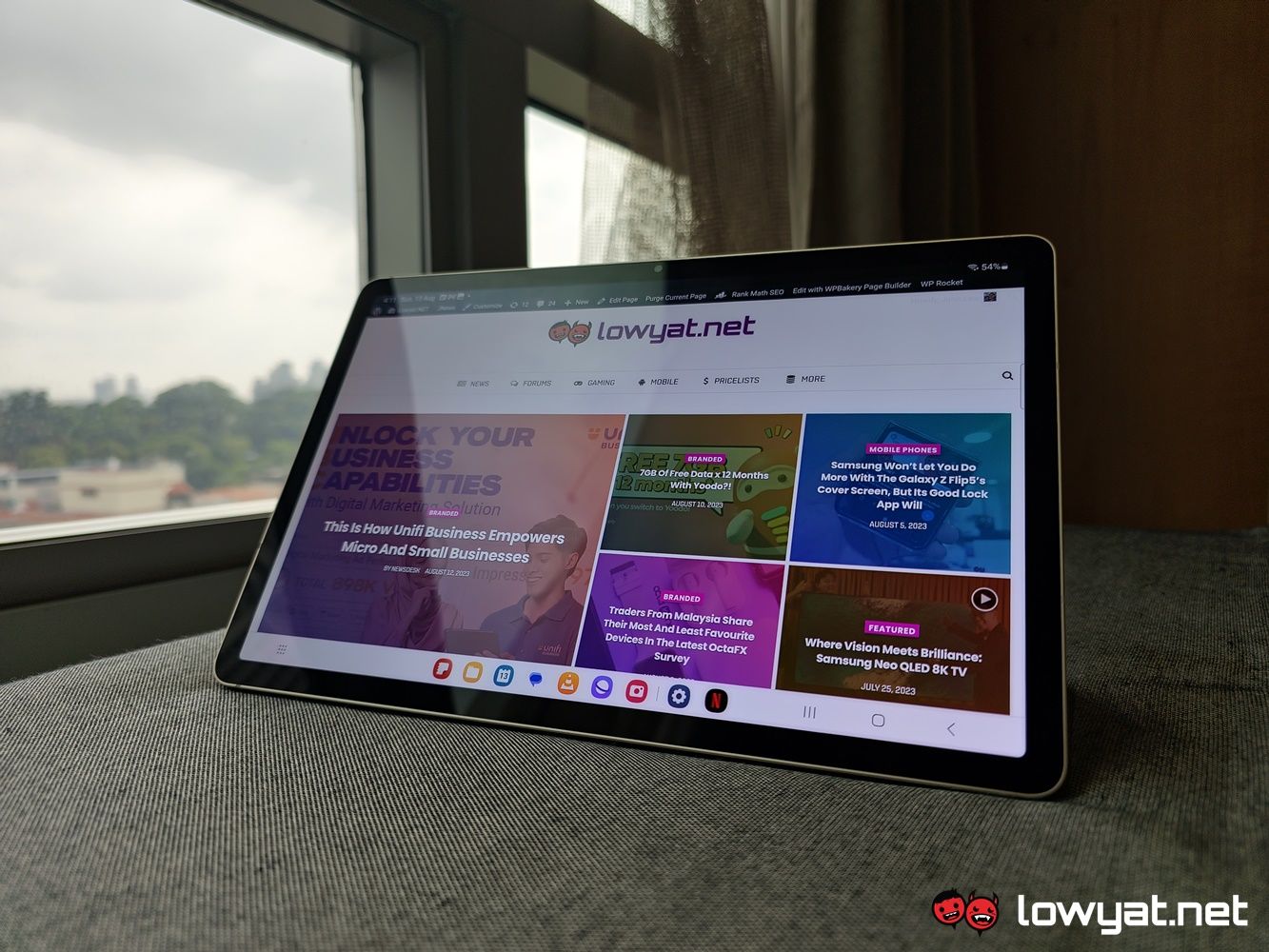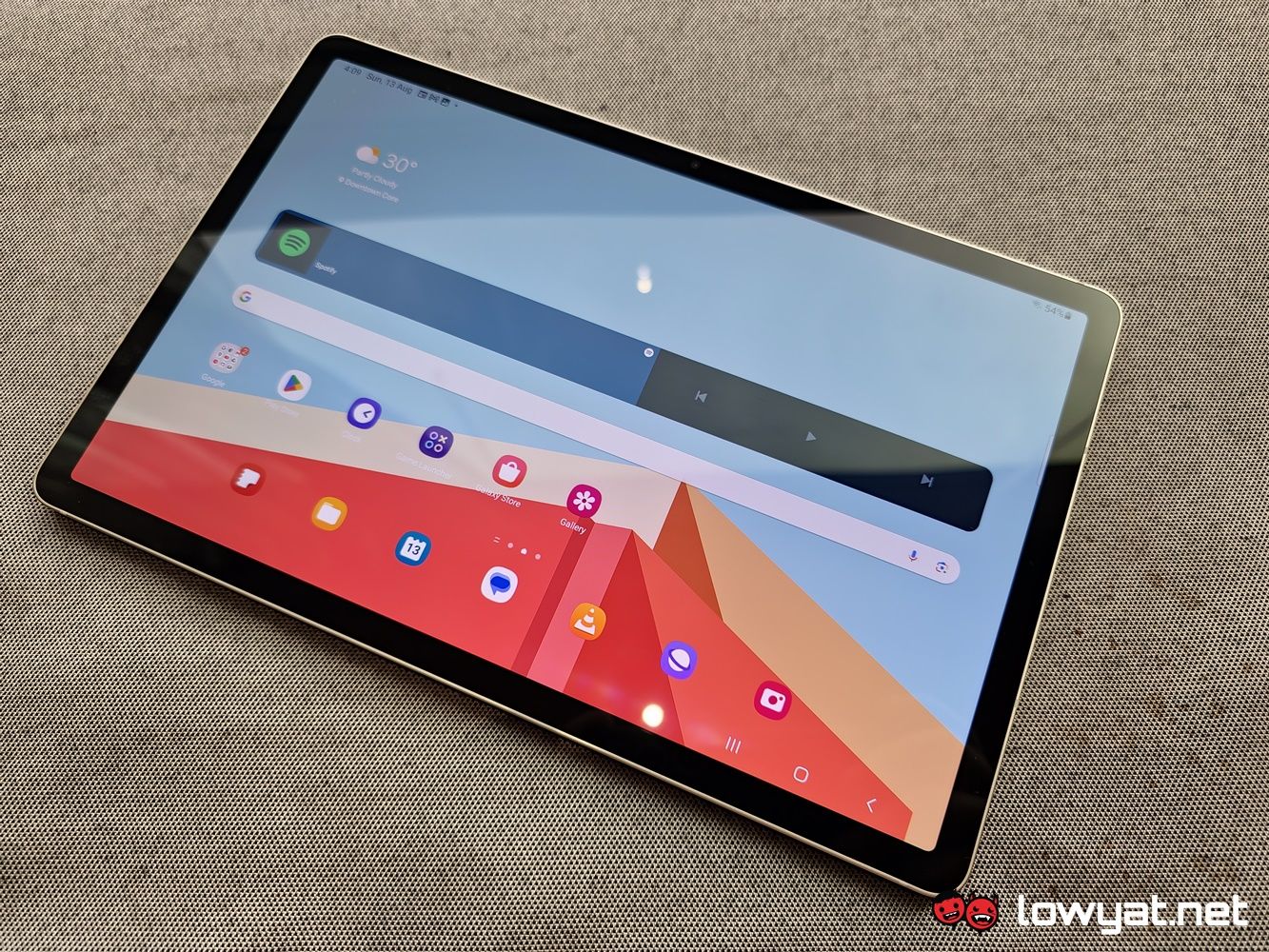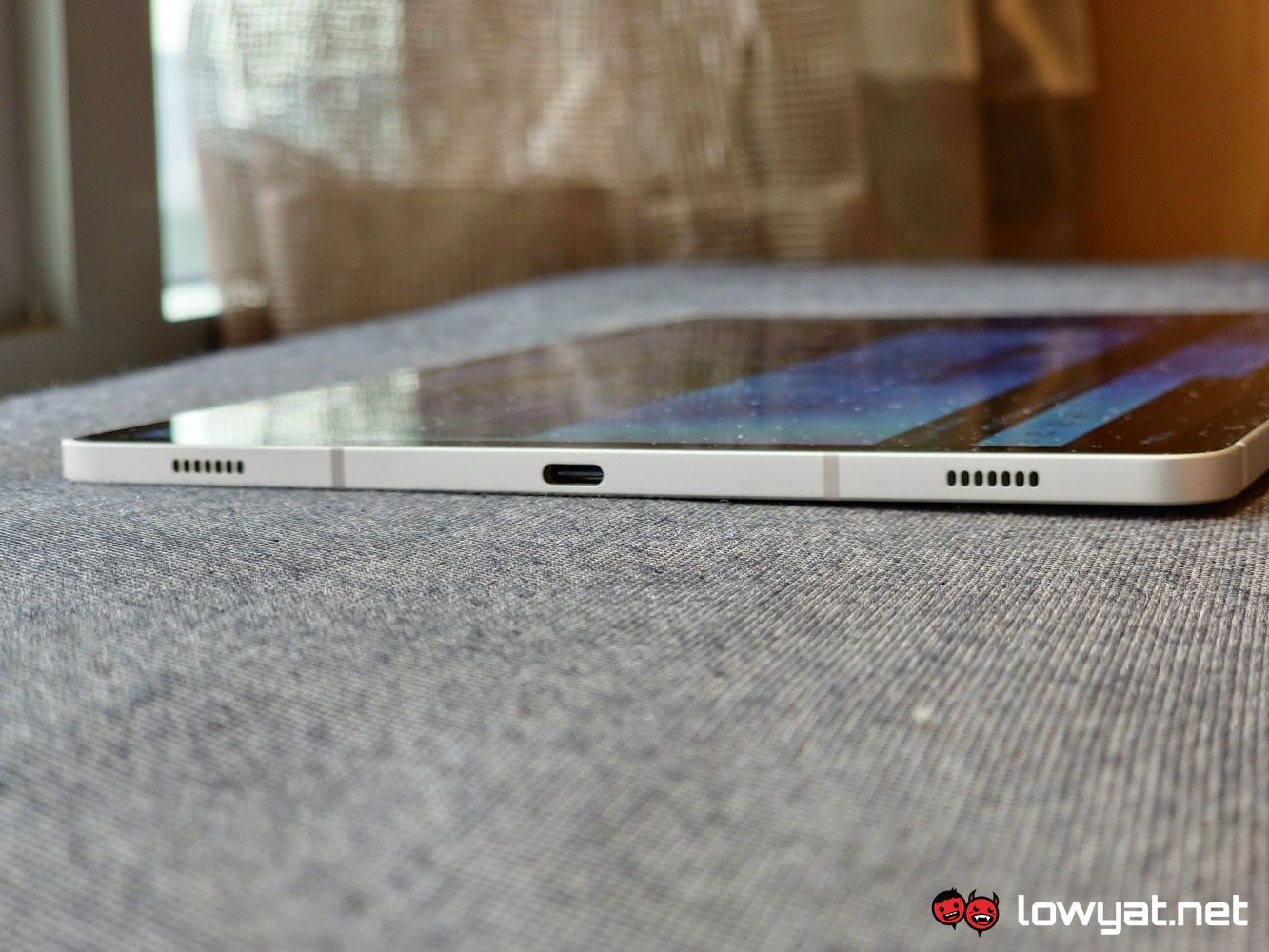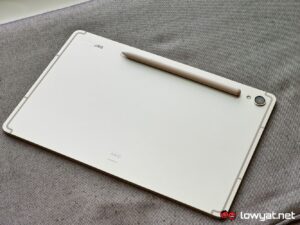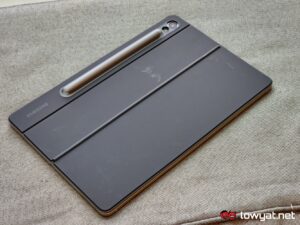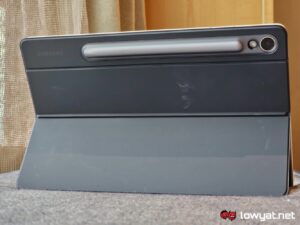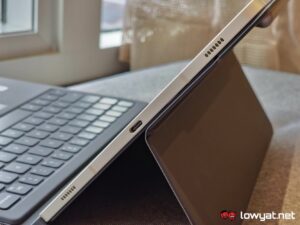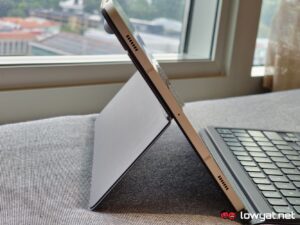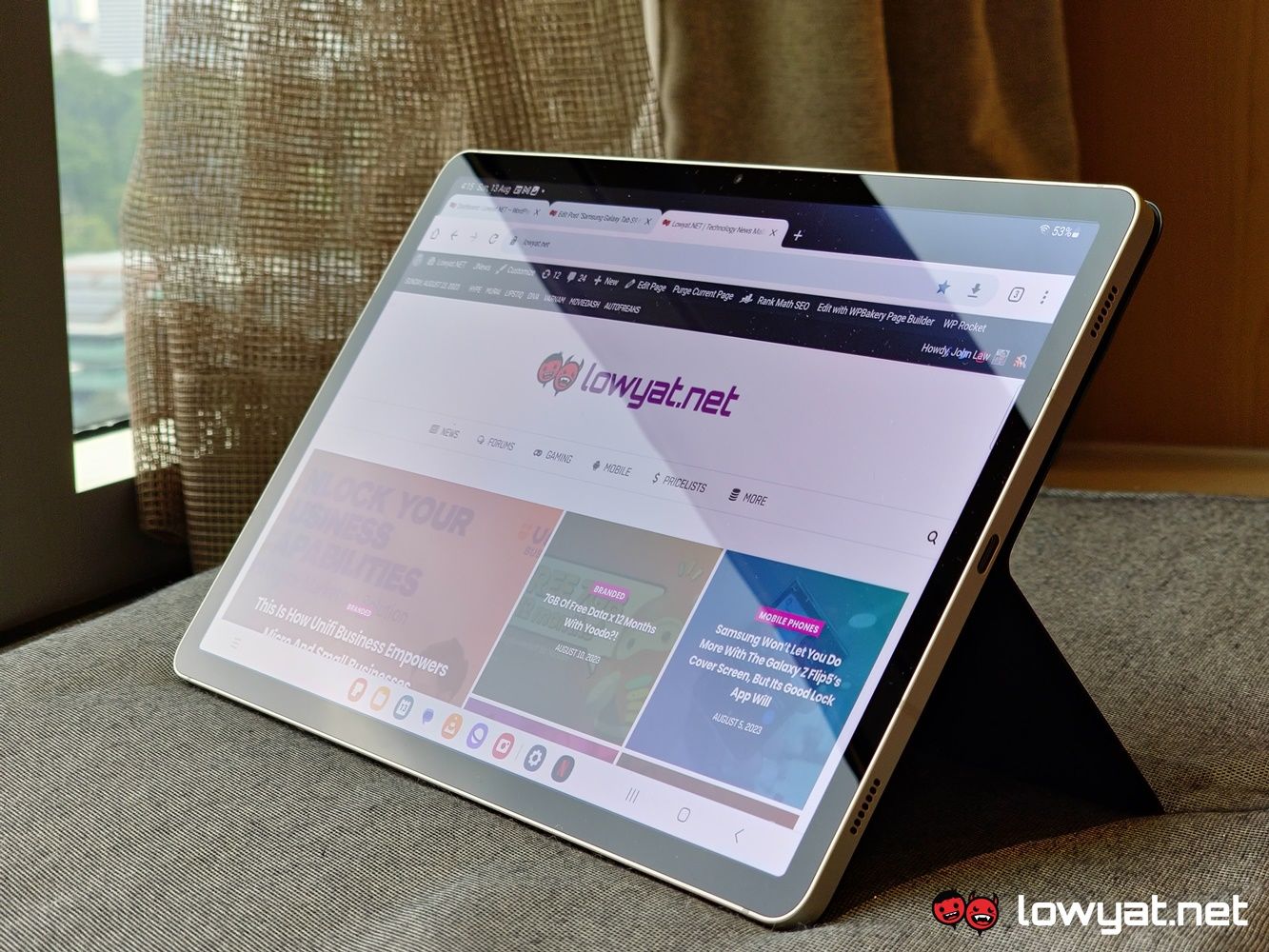Amidst the sea of foldable smartphones that Samsung announced during its bi-annual Unpacked event at Seoul last month, the Korean electronics giant also launched its Galaxy Tab S9 series of tablets. That series, by the way, comes in three sizes and variations: the standard S9, the slightly bigger S9 Plus, and of course, the premium, high-end S9 Ultra. In my hands today the first and smallest of the three tablets on that list.
By smallest, I mean that the Tab S9 measures in at 11-inch from corner to corner, but don’t let that fool you. In spite of being the smallest of the lot, the hardware crammed into this tablet is standard across the board. We’re talking the same Qualcomm Snapdragon 8 Gen2 chipset, although this is the one that has been tweaked and “modified” for Samsung’s Galaxy series; there’s a sizable 12GB of memory and honestly, that’s plenty; For storage, you have a choice between what has slowly starting to be considered a paltry 128GB, or a healthy 256GB of UFS storage, so you’re guaranteed some pretty fast transfers here.
Another standard here is the display’s resolution and panel – even at 11-inches, the Tab S9 comes with a 16:10 aspect ratio 120Hz panel but more importantly, it’s the same Dynamic AMOLED 2X panel that spits out all the vivid colours that both said panel and its creator are known for. I’ll save my thoughts on this for the in-depth review but suffice to say, this is one staple that serves Samsung well, as well as makes watching my favourite movies and shows, and reading texts on it all that more pleasurable.
The exterior of the Tab S9 is plain and simple in its design, literally. Like its predecessors, the rear of the tablet sports the same dusted metal appearance, and you can see the antenna lines clearly. You can also see the pogo pin connectors at the bottom, to be used with the provided keyboard cover that comes with the tablet. There’s also the rear cover that also features a stylus-length cubby at the back, which protects said and provided stylus when not in used, and provides easy access when the need for it arises. Lastly, there’s a hybrid SIM and microSD card slot at the base, although my unit is the Wi-Fi SKU, meaning that it only comes with support for the latter. Oh, and there’s a USB-C port for wired fast-charging and file transfers.
That’s not to say that I do not have an issue with the tablet. One gripe with the Tab S9 is more of a nitpicking issue if nothing else, and one that can be divisive: in spite of being the smallest of the series, I don’t think it’s anywhere near small enough. I remember when Samsung released the 8.4-inch model with the very first Tab S series, nearly a decade ago – It was the Korean giant’s answer to Apple’s iPad mini at the time and more to the point, it was the perfect size, what with it being closer to the size of a book. Heck, even Sony followed suit with the Xperia Z3 Tablet Compact in the same year.
What I am trying to say here is that while I appreciate the display real estate of the Tab S9, I really wish that Samsung would have revisited the possibility of making a flagship tablet within that smaller form factor. Of course, the trade-off here would be that I would use to the keyboard cover on this laptop, but to be fair, the typing experience on it isn’t what I can describe as optimal. Honestly, it’s good in a pinch, where you really need to get a quick article off post-haste or even respond to an urgent email, but in the long run, it actually fatigues my fingers.
Size aside, the Tab S9 also isn’t the lightest tablet, weighing in at 498g. To put that into another context, that’s about the size of two standard-sized steaks. If you don’t think that’s heavy, imagine walking around after you’ve consumed said steaks. If it is by its lonesome, that wouldn’t be a problem. But when you’ve got a dedicated laptop and its charging brick along with it, trust me, you will feel it wear you down.
Moving on, because the Tab S9 uses the Snapdragon 8 Gen2, its performance is what you’d expect from a chipset of this calibre. The Android performance is lightning fast and snappy, with virtually zero load times between tapping on an app or switching between them.
The 13MP main camera on the Tab S9 isn’t too shabby in its performance and can be useful when you need to take a quick snap or scan a physical document that you need to send off, or the background of someplace you want to make a digital postcard with. Just don’t expect it to capture jaw-dropping, artsy, detailed photos with it.
As for the price, the Tab S9 starts off at RM3,699 for the 128GB Wi-Fi variant. The SKU that I have here is the 256GB SKU, and that goes for RM4,199. That’s not cheap and if we’re being honest, that’s around the same price as an entry-level gaming laptop or a single unit of ASUS’ Zenbook S 13 OLED that I recently reviewed.
An in-depth review of the Samsung Galaxy Tab S9 is in the works, so keep an eye on our main page.
Follow us on Instagram, Facebook, Twitter or Telegram for more updates and breaking news.


